讲座题目:Why are our lakes the same color as our lawns: Understanding the history and ecology of harmful algal blooms in the USA
主讲人:Timothy Davis 终身副教授
主持人:陈雪初 副教授
开始时间:2019-07-01(周一)下午1:00-2:00
讲座地址:闵行校区 生科辅楼119室
主办单位:生态与环境科学学院 科技处
报告人简介:
Timothy Davis为美国博林格林州立大学(Bowling Green State University)副教授,美国EPA科学委员会顾问(EPA’s Board of Scientific Counselors),密歇根大学兼职研究员,曾任美国国家海洋和大气管理局(NOAA)五大湖环境研究实验室主任研究员。从事浮游植物生态学(有害藻华),分子生物学以及水体富营养化等方面的研究。Timothy Davis研究员先后在石溪大学,格里菲斯大学,加拿大环境局,NOAA等机构进行科学研究,具有丰富的科研经历和实际工作经验。其从事有害蓝藻水华的研究已有十年之久,近期其关于有毒蓝藻水华动态变化机制研究受到国际瞩目。作为蓝藻水华领域国际著名学者,Timothy Davis近年承担营养盐对有害藻华的影响,基因组学以及藻毒素等方面的多项课题,并且已在EST等相关领域高水平杂志上发表文章二十余篇。
报告内容简介:
Cyanobacterial harmful algal blooms (CHABs)are impacting fresh waters globally. In the USA, one of the most well-known systems that experiences these events is Lake Erie, the smallest and shallowest of the North American Great Lakes. Timely detection and monitoring of CHAB development and toxicity are of growing importance, especially for freshwater systems that supply drinking water to many municipalities. The urgent need to advance detection capabilities was highlighted by the recent ‘do not drink’ advisory issued for roughly 500,000 Toledo, OH residents in August 2014. While it is well known that cultural eutrophication is a primary driver of these phenomena, there is fierce debate over the roles of nitrogen (N) and phosphorus (P) in stimulating the growth and toxicity of CHABs. While it has been shown that estimates of bloom size can be made using spring P-loading values from the Maumee River to Lake Erie, to date no such model exists for estimating bloom toxicity. Furthermore, the role of N in stimulating CHAB growth and toxicity in Lake Erie has only recently been gaining attention. I will present the results from long-term monitoring, microcosm experiments and advanced genetic techniques. All of these data indicate that while P is critical for initiating western Lake Erie CHABs, N may be more important for stimulating growth and toxin production in total, hence both N and P must be considered when developing nutrient mitigation strategies.




